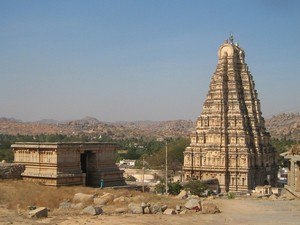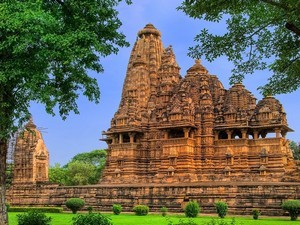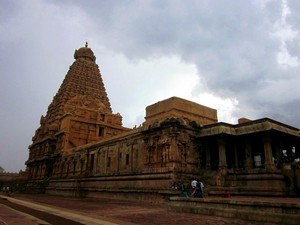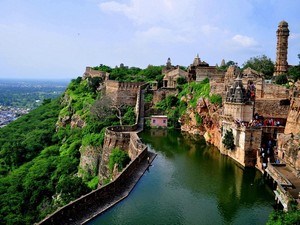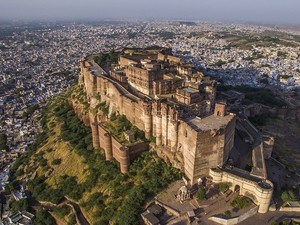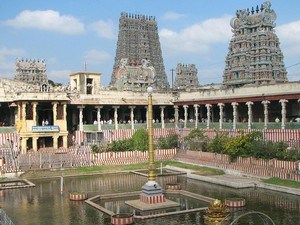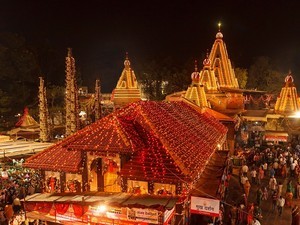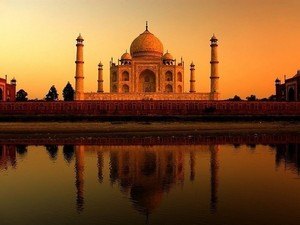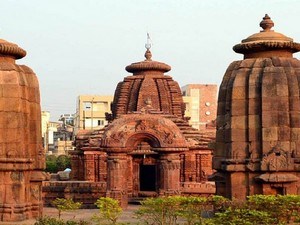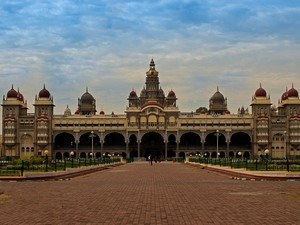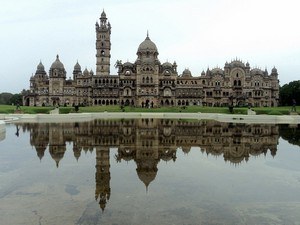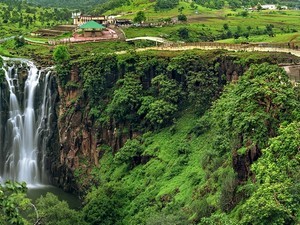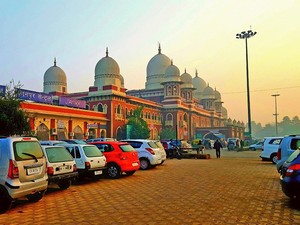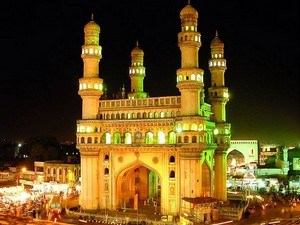1
DAY 1 : GWALIOR SIGHTSEEING
DAY 1 : GWALIOR SIGHTSEEING
 Sightseeing
Sightseeing
Leisure / No Sightseeing
At a distance of 4 km from Gwalior Junction, Gwalior Fort is one of the most beautiful historical and architectural marvels situated in the center of Gwalior city. Known as the pearl amongst fortresses in India, Gwalior Fort is one of the best historical forts in India and also one of the top places to visit in Gwalior.
The fort was built by a local king, Suraj Sen in 8th century AD on a solitary rocky hill called Gopachal. According to legend, the king was cured of leprosy, when a sage named Gwalipa offered him the water from Suraj Kund, now lies within the fort. The king constructed a fort, and named it after the sage. Since then many dynasties ruled over the place from Tomars, Mughals, Marathas and the British. Finally, Gwalior Fort was acquired by Scindias in 1886 and ruled until the independence of India in 1947. It was here that Tatya Tope and Rani Jhansi Lakshmi Bai fought for their freedom.
Spread over an area of 3 sq. km, Gwalior Fort is one of the biggest forts in .....
 Duration of visit: 2-3 Hours
Duration of visit: 2-3 Hours
 Timings: 9 AM to 5.30 PM, Sound & Light Show: 7.30 PM (Hindi) & 8.30 PM (English)
Timings: 9 AM to 5.30 PM, Sound & Light Show: 7.30 PM (Hindi) & 8.30 PM (English)
At a distance of 1 km from Gwalior Fort and 3 km from Gwalior Junction, Tombs of Mohammed Ghaus & Tansen are situated in the town of Gwalior, Madhya Pradesh. Well known for its architecture, the tomb complex is one of the prominent sightseeing attractions in Gwalior.
The Tomb of Mohammad Ghaus was built in 16th century AD during the Akbar's rule. Ghaus Mohammed was an Afghan Prince who later converted into a Sufi saint. According to legend, Mohammad Ghaus assisted Babur when he was conquered the fort of Gwalior in 1526 CE. The Sufi saint who belongs to 16th century occupies an important position in the history of Mughal India and is said to have had great influence over Mughal emperors like Babur and Humayun.
Tomb of Ghaus Mohammed is a prominent pilgrimage center of both Muslims and Hindus. The structure of this tomb is typical Mughal architecture with hexagonal pillars stand at each of its four corners. The building is square in plan and topped by a square dome decorated .....
 Duration of visit: 15 Mins
Duration of visit: 15 Mins
 Timings: 9 AM to 5 PM
Timings: 9 AM to 5 PM
At a distance of 5 km from Gwalior Fort and 5 km from the Gwalior Junction, Surya Mandir or Sun Temple is a Hindu temple in the historic city of Gwalior, Madhya Pradesh. Situated near the Residency at Morar, Sun Temple is one of the most famous heritage monuments in Gwalior and also one of the top places to visit in Gwalior.
Dedicated to Sun God, Surya Mandir is one of the popular pilgrimage places in Gwalior. Also known as Vivaswan Temple, Surya Mandir was constructed in 1988 by G.D Birla, the famous industrialist of India. The Surya Mandir is a new one in the list of the grand historical monuments of Gwalior and it does not even have any historical significance.
The temple is the replica of the famous Sun Temple of Konark in Orissa. The temple is one of the architectural wonders and has a beautiful sculpture of Lord Surya in the temple premises. The temple building is created in the shape of chariot pulled by seven horses each one depicting seven days of the week. One can .....
 Duration of visit: 30 Mins
Duration of visit: 30 Mins
 Timings: 6 AM - 12 PM & 4 PM - 7 PM
Timings: 6 AM - 12 PM & 4 PM - 7 PM
2
DAY 2 : GWALIOR SIGHTSEEING
%%Itinerary_Title_Day2%%
At a distance of 2 km from Gwalior Junction and 3 km from Gwalior Kila, Gwalior Zoo is an ideal spot and also one of the most visited tourist attractions in Gwalior. Also known as Gandhi Prani Udhyan or Gandhi Zoo, Gwalior Zoo is one of the most beautiful zoological parks in Madhya Pradesh.
The Gandhi Zoo is a part of a huge garden known as Phool Bagh which was built by Madhao Rao Scindia in 1922 and it was inaugurated by Wales Prince in the same year. The Gwalior Zoo is maintained by the Municipal Corporation of Gwalior. The Phool Bagh campus also includes a gurudwara, a mosque, a theosophical lodge and a prayer hall.
Spread over an area of 8 hectares, Gwalior Zoo is home to some rare species of animals including a white tiger. The main animals which are present in the zoo are deer, monkeys, Royal Bengal Tiger, serpents, crocodile, spotted deer, sambhar, hyena, lion, rabbits, panther, bear, hippopotamus, etc. The zoo also has some rare and colorful birds, snakes, lizards, .....
 Duration of visit: 1 Hour
Duration of visit: 1 Hour
 Timings: 8 AM to 6 PM, Closed on Fridays
Timings: 8 AM to 6 PM, Closed on Fridays
At a distance of 2.5 km from Gwalior Junction and 4 km from Gwalior Fort, Jai Vilas Mahal or Jai Vilas Palace is a 19th century palace in Gwalior, India. It is one of the important heritage places in Gwalior city and was rated among the well maintained palaces of Madhya Pradesh state.
Jai Vilas Mahal was constructed in the year 1874 CE by Jayajirao Scindia, the Maharaja of Gwalior, at a cost of Rs. 1 crore. It is a fine example of European architecture, designed and built by Sir Michael Filose. The palace was the residence of the royal family of Scindia's. A segment of the Jai Vilas Palace was converted into a museum now.
The Palace is well-known for its beautiful architecture. The palace features a beautiful blend of Tuscan, Italian and Corinthian styles of architecture. Spread over an area of 12, 40, 771 square feet, the palace has 400 rooms and a huge Durbar Hall. The interior of the Durbar Hall is decorated with gilt and gold furnishings and adorned with a huge carpet .....
 Duration of visit: 30 Mins - 1 Hr
Duration of visit: 30 Mins - 1 Hr
 Timings: 10 AM to 4.30 PM, Closed on Mondays & on National Holidays
Timings: 10 AM to 4.30 PM, Closed on Mondays & on National Holidays
At a distance of 5 km from Gwalior Junction and 6 km from Gwalior Fort, the Chhatris are the memorial of Scindia dynasty rulers of Gwalior. Situated in Chhatri Bazar, the Chhattris of the Scindia dynasty are one among the prominent attractions in Gwalior city.
Renowned for its architectural brilliance and beautiful structures, the Chhatris are located in a beautiful garden. These are elevated, dome-shaped pavilions used as an element in Indian architecture. The first chhatri was built in 1817 CE to commemorate Jayaji Rao Scindia. Since then other Chhatris have been added. The older ones are built in yellow and pink sandstone and are of great architectural value.
Apart from others, the Chhatris of Jiwaji Rao Scindia, Daulat Rao Scindia and Janko ji Rao Scindia are well known. These Chhatris preserve the beauty of the medieval period and are decorated with stone carvings of elephants, horses and tigers. These monuments have been built with pink and white stones. There is a .....
 Duration of visit: 30 Mins
Duration of visit: 30 Mins
 Timings: 9 AM - 5 PM
Timings: 9 AM - 5 PM
3
DAY 3 : TRAVEL TO JHANSI & SIGHTSEEING
%%Itinerary_Title_Day2%%
 Sightseeing
Sightseeing
At a distance of 4 km from Jhansi Junction, Jhansi Fort or Jhansi ka Kila is an ancient and historical fortress situated in the heart of Jhansi, Uttar Pradesh. Atop Bangira hill, Jhansi Fort is the landmark of Jhansi town and also one of the top places to visit in Jhansi.
Jhansi Fort was built by Raja Bir Singh Deo of Orchha in 1613 CE and served as a stronghold of the Chandela Kings from 11th to 17th century AD. In the 18th century, Jhansi served as the capital of Maratha province and later the Princely State of Jhansi from 1804 to 1853 CE. The fort was the residence of the great Rani Lakshmi Bai of Jhansi, who fought the British East India Company during the 1857 War of Independence. This fort has been a witness to the fiery battle led by Rani Lakshmi Bai. During the mutiny, the queen and her army fought fiercely for two weeks.
Sprawling over an area of 15 acres, the fort is built in the north .....
 Duration of visit: 30 Mins - 1 Hr
Duration of visit: 30 Mins - 1 Hr
 Timings: 6 AM to 6.30 PM, Sound & Light Show: 7.30 PM (Hindi) & 8.30 PM (English) in Summer, & 6.30 PM (Hindi
Timings: 6 AM to 6.30 PM, Sound & Light Show: 7.30 PM (Hindi) & 8.30 PM (English) in Summer, & 6.30 PM (Hindi
At a distance of 4 km from Jhansi Junction, Rani Mahal is a royal palace located at the heart of Jhansi town in Uttar Pradesh. Situated close to Jhansi Fort, it is one of the famous Jhansi Tourist Places and also one of the top places to visit as part of Jhansi tour packages.
Rani Mahal was built in 18th century AD by Raghu Nath-II of the Newalkar family. After the death of Raja Gangadhar Rao, Rani Lakshmi Bai used to reside in this palace. It is a flat- roofed double-storeyed building having a quadrangular courtyard with a small well and one fountain each on either side. The palace consists of arched chambers around an open courtyard that looks magnificent and is a welcome break from the typical architectures of Bundelkhand. Its major portion was damaged by British during the 1857 War of Independence.
The palace has a Durbar Hall located in the second floor that has a genuine painted wood-paneled ceiling. The interiors .....
 Duration of visit: 30 Mins
Duration of visit: 30 Mins
 Timings: 10 AM to 5 PM, Closed on Monday
Timings: 10 AM to 5 PM, Closed on Monday
At a distance of 2 km from Jhansi Fort and 5.5 km from Jhansi Junction, the Cenoteph of Raja Gangadhar Rao is located on the banks of Lakshmi Talab in Jhansi town of Uttar Pradesh. It is one of the famous heritage places in Jhansi and also one of the best Jhansi tourist places.
The Maharaja Gangadhar Rao Ki Chatri was dedicated to Maharaja Gangadhar Rao who was the king of Jhansi from 1836 CE - 1853 CE. He was the lover of the art and architecture and worked towards enriching the culture of Jhansi. He adopted the Son named Anand Rao in 1853, who he taught would be the next crown prince. Raja Gangadhar Rao expired the very next day leaving behind son and wife.
The Chatri was built by his wife Maharani Lakshmi Bai after his death. The Chatri is set within a quadrangular walled structure and has two domed structures. They are approached by a small flight of stairs. The tomb has scriptures around .....
 Duration of visit: 30 Mins
Duration of visit: 30 Mins
 Timings: 9 AM - 6 PM
Timings: 9 AM - 6 PM
At a distance of 3 km from Jhansi Junction, Rani Jhansi Museum is a museum located inside the Fort of Jhansi. It is one of the important museums in Jhansi and also among the must visit places in Jhansi.
Rani Jhansi Museum or Government Museum is not only gives an insight in to the history and heritage of Jhansi but also throws light on the history and culture of the Bundelkhand region. Dedicated to Rani Lakshmi Bai of Jhansi, this museum has an exclusive gallery on Rani Laxmi Bai and is a unique attraction. This section consists of lots of her armoury items and photographs, depicting her life since childhood.
It is also an important source to know about the life and times of the Chandela rulers. The Jhansi Museum houses weapons, statues, dresses and photographs that belong to the Chandela dynasty. The museum also houses a separate picture gallery that is dedicated to Gupta Kings. In fact, the picture gallery of the Gupta period is one of the highlights of this museum. Apart .....
 Duration of visit: 30 Mins
Duration of visit: 30 Mins
 Timings: 10 AM to 5 PM, Closed on Mondays & Second Saturdays
Timings: 10 AM to 5 PM, Closed on Mondays & Second Saturdays
4
DAY 4 : TRAVEL TO ORCHHA & SIGHTSEEING
%%Itinerary_Title_Day2%%
 Sightseeing
Sightseeing
At a distance of 16 km from Jhansi, Orchha Fort is a medieval fort situated on the seasonal island of Betwa River in Orchha. It is one of the popular forts in Madhya Pradesh and also the prime places to visit in Orchha.
The fort was built by Rudra Pratap Singh, a Bundela Rajput king, in 16th century. The palaces and temples within the fort complex were built over a period of time by successive Maharajas of Orchha State. The fort palaces showcase a supreme display of Mughal-influenced Rajput architecture. Raja Mahal, Jahangir Mahal, Rai Parveen Mahal, Phool Bagh and Sheesh Mahal are some noticed structures within the fort complex.
The Raja Mahal or King's Palace construction was started by Raja Rudra Pratap but it was completed by Madhukar Shah, the predecessor of Bir Singh Ju Deo of Orchha in the 17th century. This is a fine example of Mughal architecture with typical stone jali work and multifaced .....
 Duration of visit: 1 Hour
Duration of visit: 1 Hour
 Timings: 9 AM to 5 PM, Sound & light Show- 7.30 PM (English) & 8.45 PM (Hindi)
Timings: 9 AM to 5 PM, Sound & light Show- 7.30 PM (English) & 8.45 PM (Hindi)
At a distance of 1 km from Orchha Fort, Chaturbhuj Temple is an ancient Hindu temple situated near Ram Raja Mandir in Orchha town of Madhya Pradesh. Known for its marvelous architecture, Chaturbhuj Temple is one of the popular heritage places to visit in Orchha. The temple is under Archaeology Survey of India.
The name Chaturbhuj literally means 'one who has four arms' and it refers to Lord Rama, an incarnation of Lord Vishnu. It is believed to be built by the king of Orchha, Raja Madhukar Shah, between 1558 and 1573. Madhukar Shah built this temple for his wife Rani Ganesh Kuwari who was an ardent devotee of Lord Rama.
The temple was originally meant for Lord Rama that remained in the Ram Raja Temple. According to legend, this temple built after the queen Ganesh Kuwari had a dream where Lord Rama asked her to construct a temple for him. Following the approval to build the Chaturbhuj Temple, the queen went to Ayodhya to obtain an image of Lord Rama that was to be enshrined .....
 Duration of visit: 30 Mins
Duration of visit: 30 Mins
 Timings: 9 AM - 5 PM
Timings: 9 AM - 5 PM
At a distance of 1 km from Orchha Fort complex, Ram Raja Temple is a prominent Hindu temple situated in Orchha town of Madhya Pradesh. It is one of the top places to visit in Orchha and also one of the popular places of pilgrimage in Madhya Pradesh.
This temple was built by Madhukar Shah in the 16th century, as a palace for his principal queen Ganesh Kuwari. According to legend, this temple built after the queen Ganesh Kuwari had a dream where Lord Rama asked her to construct a temple for him. Following the approval to build the temple, the queen went to Ayodhya to obtain an image of Lord Rama that was to be enshrined in her new temple. However, the construction of the temple was not complete when the idol arrived from Ayodhya. So it was kept in the palace for the time being. When the temple construction was completed, the queen decided to enshrine the idol at the Chaturbhuj Temple but the idol refused to move from the palace. Thus, the palace converted into the temple and Lord Rama .....
 Duration of visit: 30 Mins
Duration of visit: 30 Mins
 Timings: 8 AM - 1 PM & 7 PM - 9 PM
Timings: 8 AM - 1 PM & 7 PM - 9 PM
At a distance of 2 km from Orchha Fort, Lakshmi Narayan Temple is a huge temple situated in Orchha town of Madhya Pradesh. It is one of the famous historical places to visit in Orchha other than Orchha Fort complex.
The temple is dedicated to Goddess Lakshmi, who is the Hindu goddess of wealth. Built by Bir Singh Deo in 1622, Sri Lakshmi Narayan Temple is one of the three most important temples in Orchha and also an interesting tourist attraction of the place. Within the inner chambers of the temple, Vir Singh made arrangements for offering sacrifices for Lakshmi. But due to inadequate maintenance, the condition of the temple soon worsened. It was reconstructed by Prithvi Singh during 1793.
This temple displays a perfect and unique mix of temple and fort architecture. The structure of the temple is a rectangular one with four multi-faced projecting bastions at its four corners. It has been built with lime mortar and bricks, with slots for cannons used during the wars. The .....
 Duration of visit: 30 Mins
Duration of visit: 30 Mins
 Timings: 9 AM - 5 PM
Timings: 9 AM - 5 PM
At a distance of 1.5 km from Orchha Fort, Royal Chhatris or Cenotaphs are the historical monuments situated on the banks of River Betwa in Orchha. These are one of the popular Orchha tourist places and also one of the must visit places in Orchha.
There are fifteen chattris grouped along the Kanchan Ghat of the River Betwa on the south end of Orchha town. These chattris were constructed as a mark of respect for the imperial blue blood of the mighty rulers of Bundelkhand dynasty. These monuments still speak of the ancient rulers, their victories and their stories. The complex includes the Chhatris of Madhukar Shah, Bir Singh Deo, Jaswant Singh, Udait Singh, Pahar Singh & others. A remnant of the glorious rules of the Bundela dynasty, Chhatris with its magical charm allures people through centuries.
These chattris are basically the tombs of Maharajas that have been placed on elevated platforms and supported by pillars. Built in Indo-Mughal style, these three storey buildings .....
 Duration of visit: 30 Mins - 1 Hr
Duration of visit: 30 Mins - 1 Hr
 Timings: 9 AM - 5 PM
Timings: 9 AM - 5 PM
5
DAY 5 : ORCHHA SIGHTSEEING & TRAVEL TO GWALIOR
%%Itinerary_Title_Day2%%
At a distance of 1.5 km from Orchha Fort, Rafting in Betwa River is one of the top things to do in Orchha. Orchha is one of the top heritage destinations in Madhya Pradesh and also a top rafting destination in the state of Madhya Pradesh.
Also known as the Vetravati, the Betwa rises in the Vindhya Range just north of Hoshangabad in Madhya Pradesh and flows north-east through Madhya Pradesh and Orchha to Uttar Pradesh. The challenge of a turbulent current is no less than that of the rough landscapes. Nestled in the lap of lush greenery and massive cenotaphs, Orchha's mighty river Betwa swift right from the Vindhya Range and empties itself into the Yamuna. The river is wide and its placid flow is intermittently broken by Grade I to Grade II rapids and gives another reason to adventure lovers to experience world's most lovable water adventure.
The rafting at Orchha is organised by MP Tourism, and starts from the scenic Kanchan Ghat. MP Tourism organises two river safaris at .....
 Duration of visit: 1 Hour
Duration of visit: 1 Hour
 Timings: 10 AM to 4 PM, Closed during Monsoon
Timings: 10 AM to 4 PM, Closed during Monsoon
At a distance of 1 km from Chhatris and 2 km from Orchha Fort, Orchha Wildlife Sanctuary lies on the banks of Betwa River in Orchha town of Madhya Pradesh. It is one of the most scenic places in Orchha.
Orchha Wildlife Sanctuary was established in the year 1994. It covers an area of around 46 sq. km. The river forms one of the main sources of water for the wildlife living within. Unlike other vast wildlife sanctuaries, Orchha Wildlife Sanctuary is comparatively smaller, around 25 km long and 15 km wide.
The sanctuary gains importance due to few factors, which includes rich wildlife, Betwa River and some dense plantations. Some of the animals found here include Deers, Blue bull, Monkey, Wild pig, Jackal, Nilgai, Sloth Bear and many such species. The place is a delight for bird watchers as there are nearly 200 species of birds. The migratory birds that visit the place include kingfisher, woodpecker, owls, jungle bush quail, black swan and geese.
River Betwa flowing .....
 Duration of visit: 1 Hour
Duration of visit: 1 Hour
 Timings: 9 AM to 5.30 PM
Timings: 9 AM to 5.30 PM

